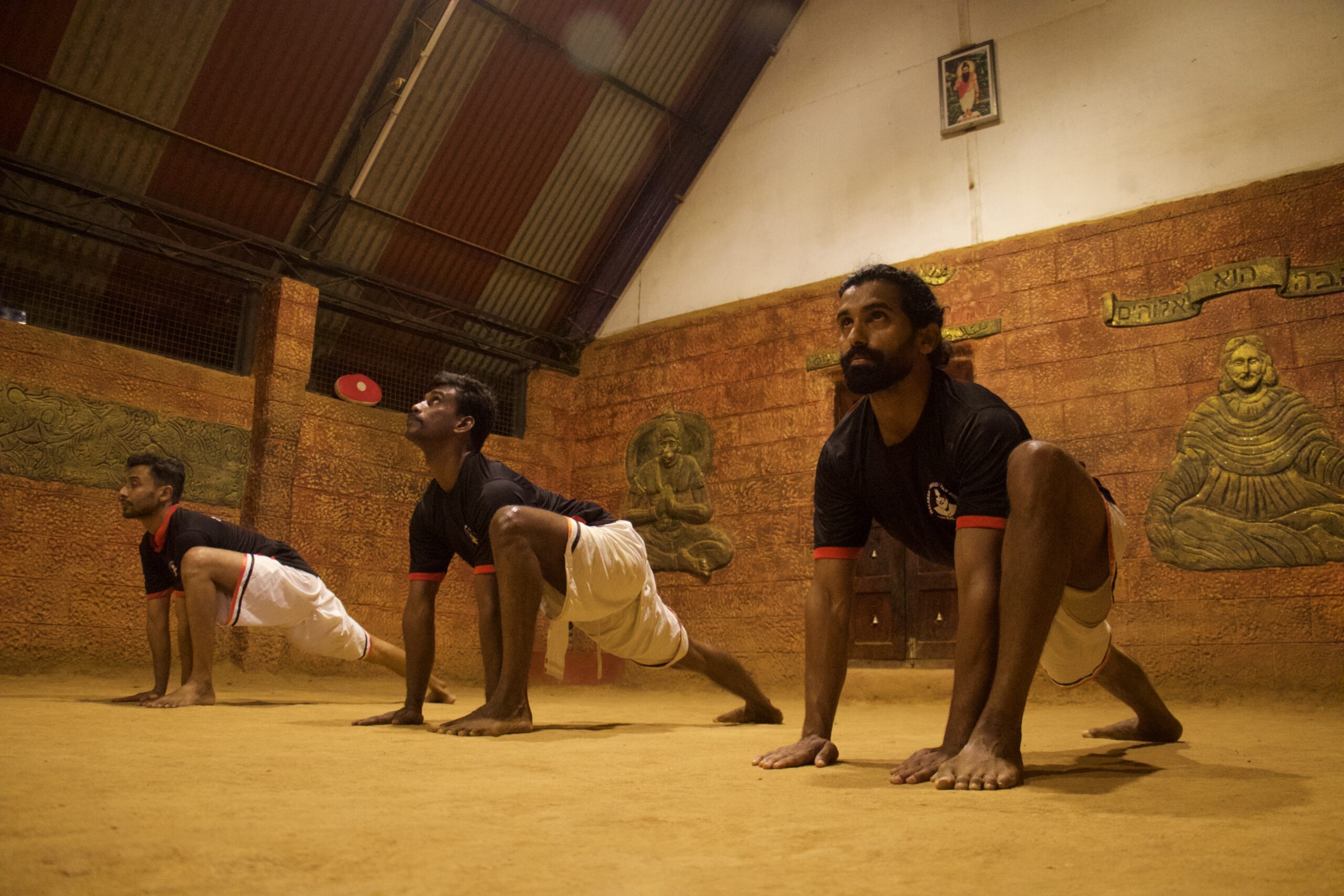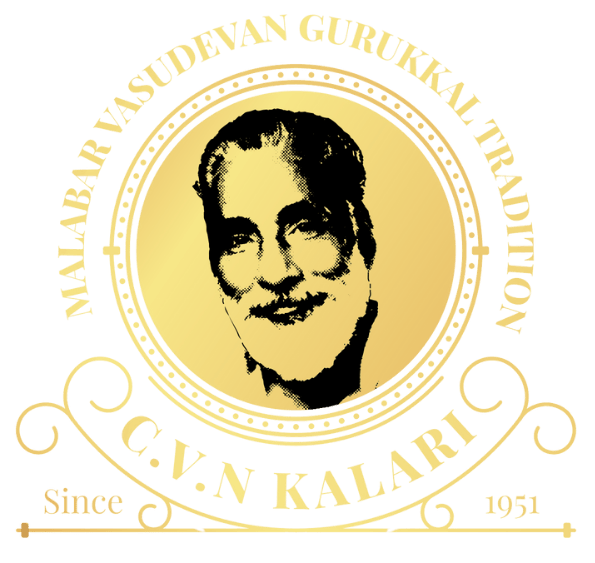Classes
- Home
- »
- Classes
Origin of Kalaripayattu
It is believed that Lord Shiva taught the art of Kalaripayattu to Lord Parasuram, his foremost disciple and Lord Parasuram after the formation of the land mass of Kerala (In the legends it is believed that Lord Parasuram carved the land mass of Kerala out of the sea by throwing his axe) established 108 Kalari’s across its length and breadth. It is believed that the word Kalari originated from the Sanskrit word Khaloorika. Kalari means place where the art of war is taught it also means place which removes all ill wills from one’s mind and projects the individual towards enlightenment.
Kalaripayattu
Kalaripayatt is the traditional martial art form of Kerala which is aims to lift the practitioners both physically and mentally. Kalari training is broadly divided into 5 categories.
- Meythaari
- Kolthaari
- Angathaari
- Verumkai
- Kalari Chikitsa


Meythaari
Meythaari is a sequence of body movements aimed at building mind – muscle connection through regular practice and thus to fine tune the various natural movements and reflexes of the body into deadly attack and defense techniques.
Kolthaari
When a student after practicing Meythaari for some time and reaches the physical ability, achieves control over his movements, focus of the mind, he/she then moves on to Kolthaari, which is techniques of fighting with wooden weapons. Kettukaari (Long Stick), Muchaan (Short Stick), Otta (Wooden weapon in the peculiar shape of human spine, used to strike the vital points (marma) of the opponent and Gadha (a mallet or blunt mace) are the weapons used in kolthaari.
Angathaari
Angathaari teaches students how to fight with sharp metal weapons. It starts when the teacher/master feels that the student is ready for it through the continuous practice of Kolthaari and has achieved the necessary physical capacity and mental focus and also a certain amount of mental maturity to handle such deadly skills. Marakatara, Valum Parichayum (Sword and Shield), Udavaal (Long Sword), Kathiyum Thalayum (Knife and a piece of Cloth), Urumi (Flexible sword) etc are the weapons practiced.
Verumkai
Although many aspects of Verumkai are included within the practice of Meythaari, Kolthaari and Angathaari, Vettum Thanjangalum (Various attack and evading techniques), technique of fighting with Chottachaan at the various Marma (Vital) Points are taught in Verumkai.
Kalari Chikitsa
Only someone who practices kalaripayattu and has achieved a certain level of proficiency in his stances, movements, flexibility, has total control over his/her body and mind can perform Kalari Chikitsa (kalari treatments) effectively. As most of the techniques in Uzhichil, Thirummu (Massage with hands), Chavuttithirummu (Massage with legs) etc are to be performed while in different Amarchas (Stances) and especially in case of Chavuttithirummu (Massage with legs) only people who have complete mastery over their body by regular practice of Kaalsadhana (leg excercises) which are part of the Meythaari can perform it as it requires the practitioner to have as much control and flexibility to do the same movements that he normally performs with his hands to do it with his legs.
Kalari Chikitsa originated from the necessity of treating the warriors who gets injured while practicing and also during duels. It later evolved into an extensive treatment modality which focuses on Neuropathic issues (ailments of the nerves), Orthopedic issues (aiments of the bones) and Muscle ailments.
Traditionally wherever there are kalari’s they all act as an alternative medicine system which people effectively use to treat conditions like broken bones, burises, dislocations, wear and tear of the joints, lack of flexibility, lack of strength in joints and muscles, neck and shoulder pains, frequent shoulder dislocations, tennis elbow, lack of flexibility after setting of broken bones (plaster), Back ache, back issues relating to disc prolapse, injuries caused to the ligaments of the knees or wear and tear of the joints, obesity and related issues, physical weaknesses, premature aging, Erectile Dysfunction caused due to physical and mental issues, swelling and pain in the body due to injuries caused by way of falling or accidents, issues caused due to reduced blood flow in the body, lack of movement after stroke etc to name a few.
